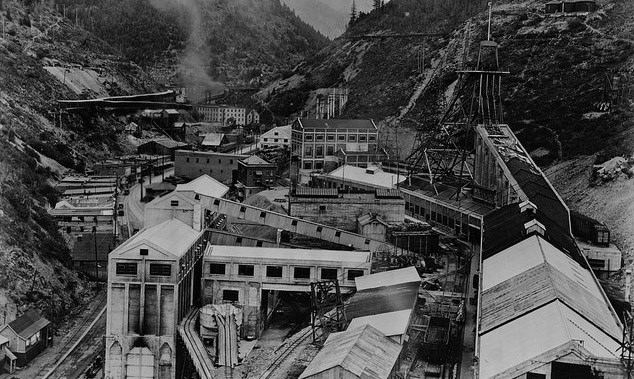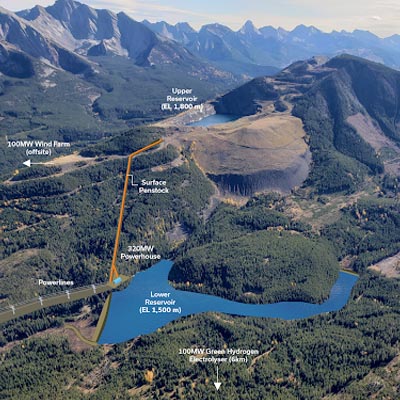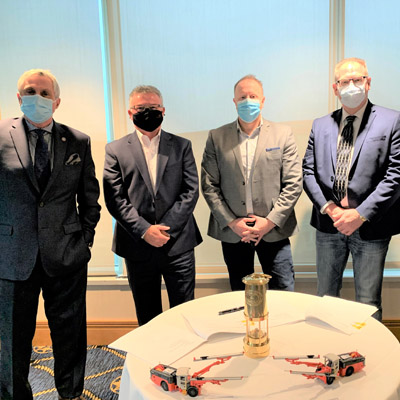The secret to Hecla Mining Company’s 125 years of success
Hecla Mining Company is the oldest mining company on the NYSE

The Hecla Mine is steeped in history — Photo courtesy Hecla Mining Company.
This year marked 125 years in business for Hecla Mining Company, the oldest mining company on the New York Stock Exchange. Hecla was founded in 1891 and began with its original mine near Burke, Idaho. That project operated for more than 50 years until fire destroyed the town of Burke and all of the Hecla mine buildings in 1923.
The mine and mill were rebuilt and processed ore until 1937 when the operation was converted to a flotation plant to handle ore from the Star mine, one of the deepest mines in North America. The Star mine ceased operation in 1982.
Today, Hecla is America’s largest primary silver producer with operations in the U.S., Canada and Mexico. The company’s Lucky Friday mine in the Coeur d’Alene Mining District in northern Idaho has been in near continuous operation for over 70 years. Hecla has completed the excavation of the No. 4 shaft to nearly two miles below the surface, which could extend the mine life another 20 to 30 years.
Phillips S. Baker, Hecla Mining Company's president and CEO, said the company’s resilience can be whittled down to commitment and great assets with long mine lives and low costs.
“Commitment has resulted in continuity in management, board and employees, and long-tenured leaders have given Hecla a sense of direction, continuity and perspective that you can’t create when there is high turnover of leaders,” he said. “Today, conventional wisdom suggests boards of directors should have tenures less than 10 years, CEOs should be replaced at the first sign of difficulty, and that all employees want to change jobs, change towns, change careers. Not at Hecla.”
Baker is only the company’s 11th CEO and has been in the job 13 years. Hecla has several employees who have been with the company for decades, as well as employees who are part of generational legacies.
“When people are so committed to a community and a company, and the company is committed to them, they figure out how to make mines work, and to make a company work,” said Baker.
Hecla practises a no-exception policy to operating great assets with long mine lives and low costs. The company’s Alaskan Greens Creek property is in its 28th year, has produced 200 million ounces of silver, and still has almost 100 million ounces of reserves.
“Every long-lived company has one thing in common,” said Baker. “They have at least one company-making asset like Greens Creek.”
San Sebastian in Mexico is an example of Hecla’s flexibility as the property’s potentially short mine life is expected to deliver 400 per cent returns.
“Rock Creek and the soon to be acquired Montanore (both in Montana) provide another feature of long-lived mining companies: having future high quality mines that leverage special expertise,” said Baker. “Both of these projects, located in sensitive environmental areas, allow Hecla to use our knowledge gained by mining in a National Monument at Greens Creek, and both are expected to have annual production among the largest primary silver mines in the U.S.”
In more ways than one, Hecla has shaped the face of technology in American mining. In 1903, its demand for power resulted in the longest transmission line in the world. It was the first mine in the U.S. to deliver paste and mine under fill, it utilized the first circular shaft in Idaho’s Silver Valley, and it was an early adopter of rubber-tired equipment.
“We are also testing a battery-powered LHD (Load Haul Dump) vehicle underground, which could help reduce the heat and diesel emissions generated at depth and therefore the need for refrigeration and ventilation,” said Baker.
Hecla has installed wireless technology deep into its mines. Greens Creek, for instance, currently has fibre optics running through most of the working areas and has about 70 hotspots for wireless data collection.
The high-speed wireless system allows the company to gather information, which is transmitted to the surface, then stored and displayed graphically to provide hard data for decision making in real time, and to provide rapid communication with the work force.
“We have automated the shaft at Casa Berardi, Quebec, resulting in an additional 15 skips per day, and are using stope drills in automatic mode between shifts to increase the number of metres drilled per day,” said Baker. “We can leverage the knowledge at our Quebec mine in these areas throughout the rest of Hecla for these applications.”
Aside from its iconic American history, Hecla has had various forays into the Canadian market. Ten years ago it established co-headquarters in Vancouver, with exploration, corporate development and investor relations based there.
Its Vancouver presence led to the acquisition of Aurizon and ownership of Casa Berardi—an underground gold mine located 95 kilometres north of La Sarre in northern Quebec. In addition to underground workings, Hecla has begun excavating that project’s first open pit, called the East Mine Crown Pillar Pit, which should provide a 25 per cent increase in production and generate a 90 per cent internal rate of return.
Hecla also has a number of exploration and development properties in Quebec as part of the acquisition of Aurizon Mines, including the most advanced—the Heva-Hosco project with a million gold ounce resource lying along the famous Cadillac Break in the prolific Abitibi region.
Further north is a 50-50 joint venture with Typhoon Exploration on the Fayolle project where the partners have identified a high-grade gold resource.
“Hecla is earning into some strategic exploration ground to the north and east of Goldcorp’s Eleonore Mine in northern Quebec,” said Baker. “Exploration will continue this summer with partners Azimuth Exploration and Everton Resources to advance the Wildcat and Opinaca properties where we have identified alteration and mineralization that is similar to the Eleonore Mine. Northern Quebec has tremendous mineral endowment and is one of the better jurisdictions in the world in which to explore and develop a mine, and Hecla plans to be an active participant.
Despite market fluctuations, Hecla has continued to invest in sustaining and growth capital, in exploration at its key properties and in new technologies that could fundamentally change its mines.
“We have zigged while the industry zagged,” said Baker. “We have done that because we know prices are volatile and move in cycles. We expected the low prices we have seen over the last few years would rebound and by adding low-cost production we increased leverage to the higher prices while increasing our protection if prices slip back.”
The company remains focused on acquiring and investing in long-life, low-cost properties where knowledge can wring out value, and is determined to be a leader as it ushers in a new generation of narrow vein underground mining.
Its forward vision is production of both silver and gold, with the expectation that revenues of one metal will dominate the other, depending on the price.
“However, we believe that in the long term–the next 30 years–silver demand will increase 50 per cent to 1.5 billion ounces consumed per year, and that this will cause relative outperformance,” said Baker. “Hecla, with our large and growing silver reserves, will help provide the silver the world needs. Hecla is 125 years old and mining for the future.”




